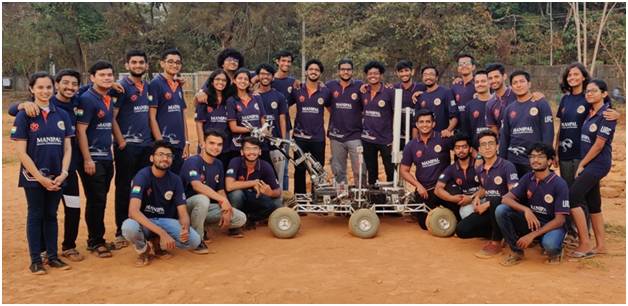NE SCIENCE & TECHNOLOGY BUREAU
Mars Rover Manipal (MRM), a student rover design team from the Manipal Institute of Technology, Manipal Academy of Higher Education (MAHE), powered by Mouser Electronics and SICK Sensor Intelligence, has bagged the first place in the first edition of the Indian Rover Design Challenge (IRDC 2020), an MIT release said.
The result was announced on August 15, 2020, by Dr Robert Zubrin, the Founder and President of The Mars Society, USA. MRM scored 816.5 points for the submission, securing the first position by a margin of 15 points.
The first edition of the Indian Rover Design Challenge (IRDC) was organized by the Mars Society South Asia (MSSA) this year. MSSA is the official chapter of The Mars Society for the South Asian region. The Mars Society is the world’s largest, most influential space advocacy organization dedicated to the human exploration and settlement of Mars.
The IRDC, an online competition for university students challenges them to design Mars rovers which are fully equipped and mission-ready for actual operations on Mars. Students are encouraged to be as imaginative, creative, and insightful as possible within practical implementable limits for the human race.
The teams had to submit an Engineering Design Review (EDR) within a set time frame. The competition took place during June-July 2020, and 28 teams from 7 countries – India, USA, Poland, Italy, Singapore, Sri Lanka, and Bangladesh – participated. It included teams from well-renowned universities like the University of Michigan, National University of Singapore, Warsaw University of Technology, Indian Institute of Technology, and National Institute of Technology.
The 30-member team comprising 2nd and 3rd year engineering students from Manipal Institute of Technology (MIT) designed rover parts keeping in mind the various factors that would be different on Mars. The teams are supposed to carefully plan each subsystem of the rover, considering various extra-terrestrial conditions and parameters in the design.
The teams were judged on three main categories: Innovation, Effectiveness of their solutions, and the Research parameters they considered before proposing a solution. The three parameters carried equal weightage and the teams that came up with the best solutions to the problem statement, keeping in mind the limitations of the Martian surface, were awarded maximum points. The independent subsystems like the Drive Systems of the rover (Suspension and Wheels), Science Payload and Rover Control Algorithms (Navigation and Robotics Manipulator Control) were prioritized for assessment.












